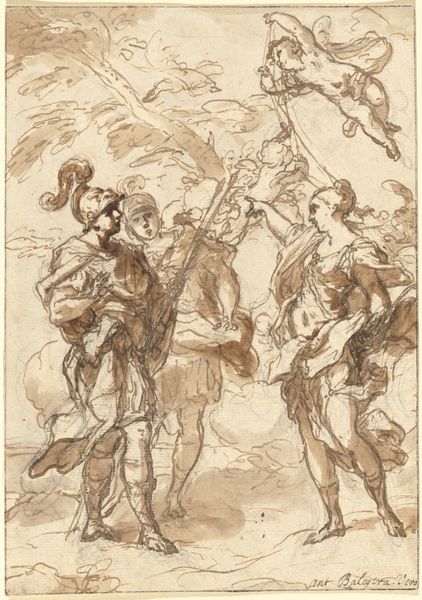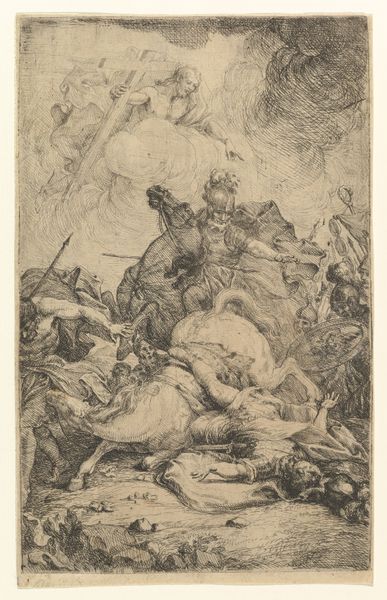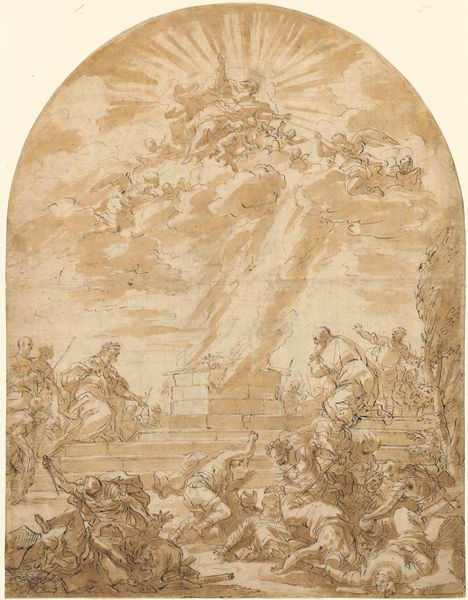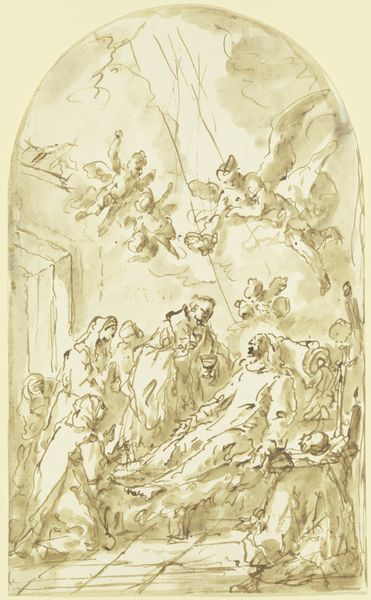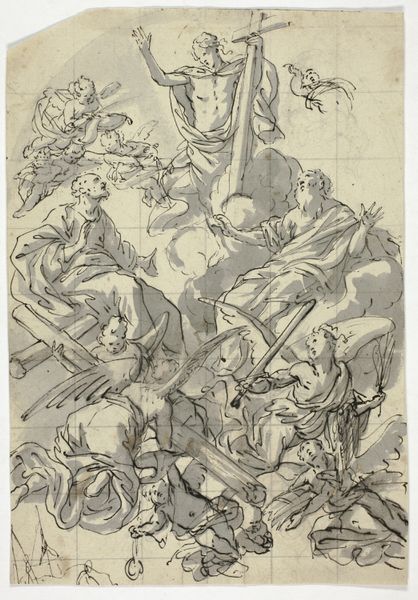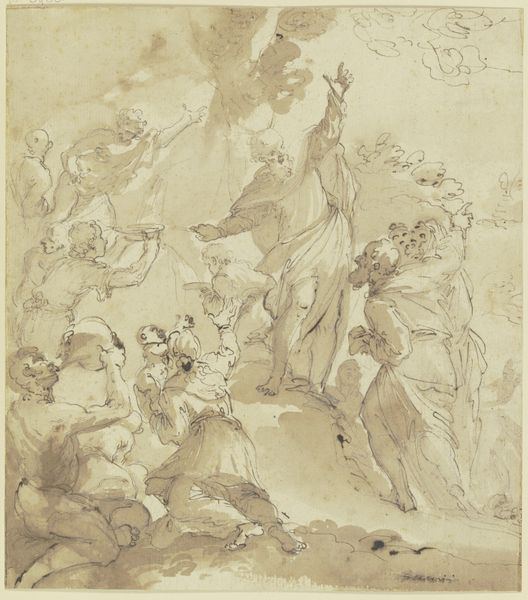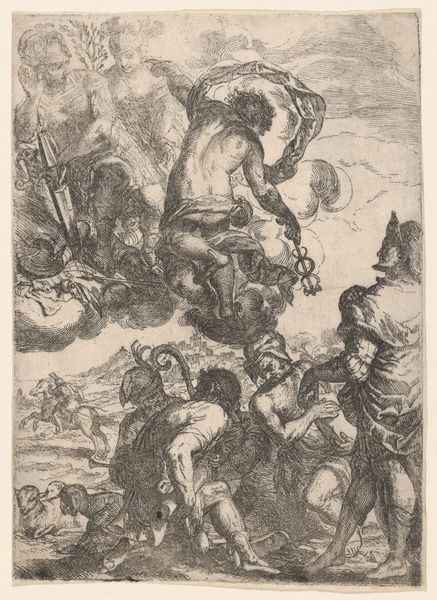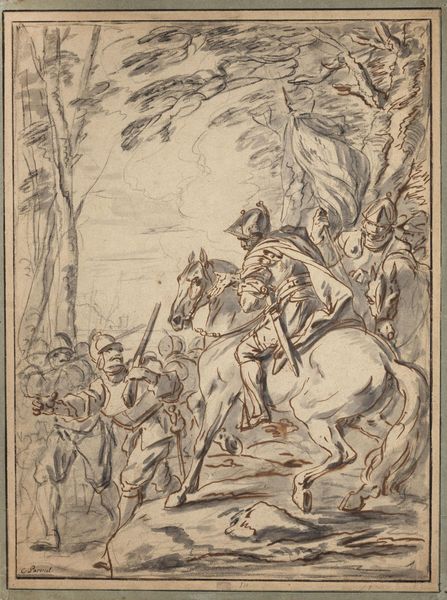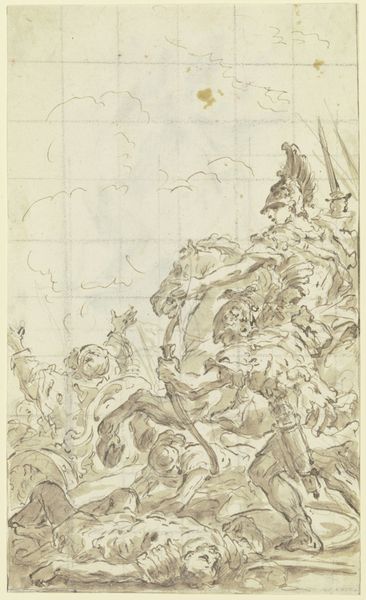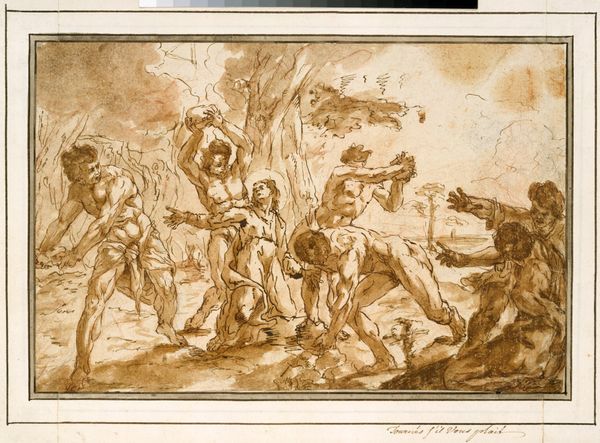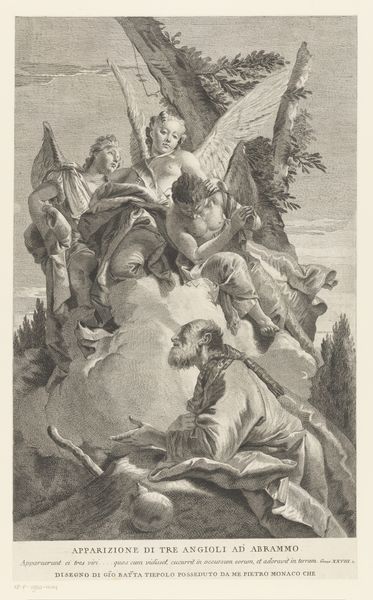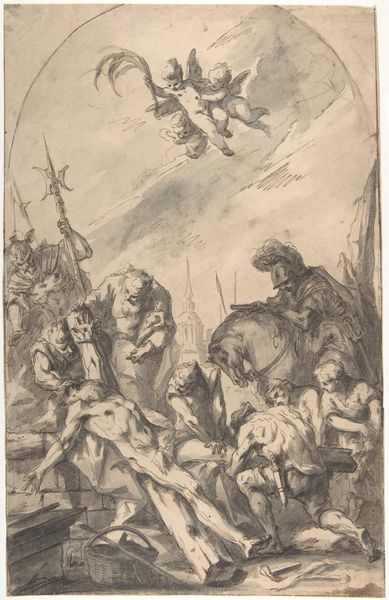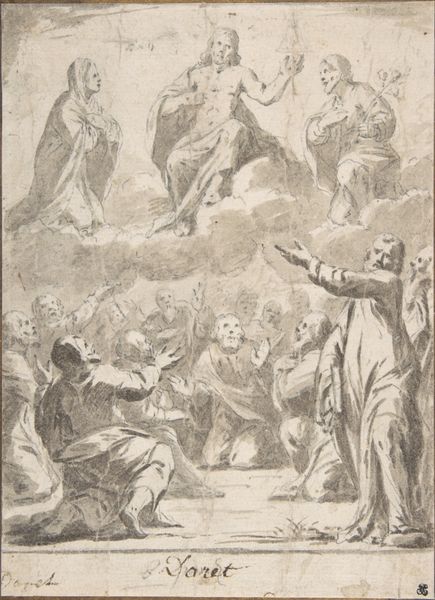
drawing
#
drawing
#
figuration
#
11_renaissance
#
history-painting
#
italian-renaissance
Dimensions: 8 3/4 × 7 13/16 in. (22.23 × 19.84 cm) (sheet)19 3/4 × 15 3/4 in. (50.17 × 40.01 cm) (outer frame)
Copyright: Public Domain
Joos van Winghe created "The Resurrection" using pen and brown ink with brown and white wash on paper, sometime between 1575 and 1600. Winghe was a Flemish artist whose life spanned a period of immense religious and political upheaval in Europe. The work depicts Christ rising from his tomb as Roman soldiers recoil in terror. Angels hover nearby. Consider how the representation of power is at play here. The triumphant Christ, bathed in light, stands in stark contrast to the disarray and fear among the soldiers. Winghe was working during the Counter-Reformation, when the Catholic Church sought to reaffirm its authority. Winghe, who fled the Spanish Netherlands due to religious persecution, infuses this scene with personal meaning. The resurrection becomes not just a religious event, but a symbol of hope and liberation from earthly oppression. In this context, "The Resurrection" conveys a powerful message of spiritual and political resilience.
Comments
minneapolisinstituteofart almost 2 years ago
⋮
Joos van Winghe studied art in his hometown of Brussels and traveled to Rome, where he stayed for four years. After a short period back in the Spanish-ruled Netherlands, he moved to Frankfurt. The wiry, broken outlines, linear use of white highlighting, strong play of light, exaggerated gestures, and treatment of details such as beards and drapery seen here are hallmarks of van Winghe’s drawing style. Exploding with energy, this work displays great painterly freedom. The resurrected Christ rises above the tomb in a burst of light as the sun peeks over the distant horizon. Christ startles the soldiers, who had been sleeping through their watch (and they must have found the angel hardly less surprising). By including the three crosses of Golgotha and the three Marys, who have come through the gate to visit the tomb, van Winghe extended the narrative backward and forward through time.
Join the conversation
Join millions of artists and users on Artera today and experience the ultimate creative platform.
